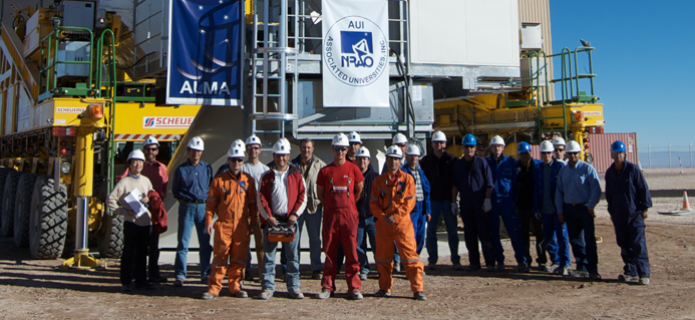First move of antenna in ALMA
The antenna was transported from inside the assembly hall to an outdoor foundation within the VertexRSI construction area, the contractor for the North American antennas of ALMA. The reason for this move is that this antenna -the second North American antenna received by ALMA in Chile- had completed the functional phase of acceptance testing.
From this new setting, the antenna will continue the servo system calibration and pointing accuracy performance testing. This spectacular move took approximately 2 hours from lift to set down, since the transporter is able to move at a maximum speed of 12 km/h. This operation finished with the 100 ton antenna placed with millimetric precision on a concrete docking pad.
The Atacama Large Millimeter/submillimeter Array (ALMA), an international astronomy facility, is a partnership of the European Organisation for Astronomical Research in the Southern Hemisphere (ESO), the U.S. National Science Foundation (NSF) and the National Institutes of Natural Sciences (NINS) of Japan in cooperation with the Republic of Chile. ALMA is funded by ESO on behalf of its Member States, by NSF in cooperation with the National Research Council of Canada (NRC) and the Ministry of Science and Technology (MOST) in Taiwan and by NINS in cooperation with the Academia Sinica (AS) in Taiwan and the Korea Astronomy and Space Science Institute (KASI).
ALMA construction and operations are led by ESO on behalf of its Member States; by the National Radio Astronomy Observatory (NRAO), managed by Associated Universities, Inc. (AUI), on behalf of North America; and by the National Astronomical Observatory of Japan (NAOJ) on behalf of East Asia. The Joint ALMA Observatory (JAO) provides the unified leadership and management of the construction, commissioning and operation of ALMA.
